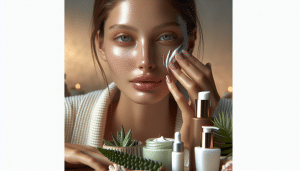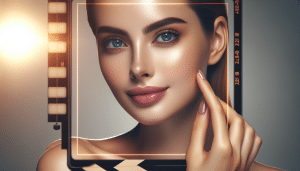What Happens When You Start a Retinol Routine
Natalie Brooks September 5, 2025
Curious about retinol skincare routines and their impact? Explore how retinol reshapes wellness and beauty by supporting youthful skin, targeting common skin concerns, and elevating self-care. Discover benefits, timing, myths, and safe usage—all grounded in research and expert insight.
Unlocking the Power of Retinol in Skincare
Retinol has become a buzzword in the world of wellness and beauty, capturing attention with its reputation for transforming skin texture. Derived from vitamin A, retinol is actively used in many skincare products due to its ability to address a range of skin concerns. Many studies highlight its effectiveness in encouraging cell turnover, which means fresher, smoother skin is revealed over time. Incorporating retinol into a skincare routine can lead to noticeable improvements, provided consistent use and patience guide the process. The science behind retinol’s popularity goes beyond marketing—its activity at the skin’s cellular level helps diminish visible signs of aging and can bring renewed confidence to a self-care regimen.
One of the standout benefits of retinol is its ability to reduce the appearance of fine lines and wrinkles. When added to a nighttime routine, retinol can assist in collagen production—a crucial protein that keeps skin looking plump and resilient. Collagen naturally decreases as part of the aging process, so supporting its growth with retinol-based products is a proactive approach. Over several weeks or months, many individuals report smoother skin texture and a radiant look. Dermatologists frequently recommend retinol for its proven potential in rejuvenating mature skin, making it a high-interest ingredient for those seeking holistic skin wellness.
Beyond anti-aging, retinol is celebrated for promoting even skin tone and clarity. Hyperpigmentation, acne scars, and sunspots often respond positively to retinol use. This ingredient accelerates the fading of discoloration by speeding up cell renewal. However, guidance from a skincare professional can make a significant difference—overuse or improper application may result in irritation or dryness. Learning how to harness retinol’s benefits safely can make skincare routines both effective and enjoyable. People of different skin types, from oily to mature, may find retinol to be a valuable addition, provided they introduce it gradually and observe skin’s response.
How to Start a Retinol Routine for Maximum Results
Introducing retinol into a skincare routine requires thoughtful preparation. Experts suggest starting with a low concentration to allow skin to acclimate with minimal irritation. Applying retinol at night maximizes its effectiveness, as light can destabilize the compound. A simple beginner routine might involve using retinol once or twice a week, then increasing frequency as skin tolerance builds. Pairing retinol with a gentle cleanser and fragrance-free moisturizer helps maintain a healthy barrier. Guiding the process with patience is essential; immediate results are rare, but with steady use, cumulative benefits often follow.
Retinol and sunscreen are often mentioned together, and for good reason. Retinol increases sensitivity to ultraviolet rays, so using a broad-spectrum sunscreen daily is nonnegotiable. This step protects new skin while preserving the benefits gained from retinol. Sunscreen isn’t limited to sunny days—UV rays penetrate clouds and glass, reaching skin indoors and in all seasons. Emphasizing sun safety alongside retinol use brings both wellness and beauty together: looking after skin’s health is foundational to radiant appearance. A well-rounded routine supports results and shields against premature damage.
Some wonder if layering retinol with other active ingredients—like vitamin C or exfoliating acids—is safe. While advanced routines can include multiple actives, most professionals advise building tolerance to retinol first. Mixing strong actives prematurely may heighten the risk of peeling, dryness, or sensitivity. Instead, alternate nights or use actives at different times of day, aligning with overall skin goals. Reading ingredient labels carefully and consulting with a dermatologist helps personalize the process. Building an intentional routine ensures retinol’s benefits shine through without unwanted setbacks.
Understanding Retinol Myths and Facts
Rumors about retinol often circulate in beauty communities, leading to confusion about its safety and effectiveness. One common myth is that retinol thins the skin. Research shows the opposite is true—topical retinol supports the thickening of the skin’s outer layer and boosts structural integrity. This strengthens immunity against environmental stressors and keeps skin supple over time. Another misconception is that retinol is only suitable for mature or aging skin; in reality, it helps a range of conditions at various life stages, including acne and pigmentation issues in younger adults.
Concerns about peeling and redness may cause some to hesitate before starting a retinol routine. Mild irritation can happen during the early transition phase. However, these effects are usually temporary and can often be managed by adjusting frequency or using milder formulas. Supporting the skin with barrier-repair products, such as ceramide-enriched creams, can soothe discomfort and build resilience. Gradual introduction is the key to unlocking retinol’s potential without unnecessary setbacks, turning initial challenges into long-term wellness gains.
Retinol is sometimes confused with stronger prescription retinoids, which are regulated and may require medical supervision. Over-the-counter retinol is widely available and formulated for daily skincare use. While results develop more gradually compared to prescriptions, their efficacy for most common concerns is still supported by research. Making informed choices, staying consistent, and addressing questions with a skincare specialist can simplify the process. Myths diminish when reliable information and real-life experience take center stage.
Benefits of Consistent Retinol Use for Different Skin Types
Consistency is the driving force behind visible improvements from retinol. Every skin type may react slightly differently, but most benefit from regular use over time. For individuals with oily or acne-prone skin, retinol can regulate oil production and keep pores clear—helping manage breakouts. Those with drier complexions may enjoy smoother texture and reduced flakiness, provided they pair retinol with adequate hydration. Maturing skin often sees a brighter tone, firmer look, and fewer lines, reflecting retinol’s multi-faceted boost to beauty and wellness.
Building a habit around nightly retinol application can feel like an act of self-care. The ritual can become soothing, supporting both emotional and physical well-being. Many followers of wellness trends say sticking to a retinol routine offers a sense of control over the aging process. When used with awareness, retinol is gentle enough for long-term use. Fluctuations in hormone levels, seasons, or stress may influence how quickly or dramatically benefits are seen, but commitment typically yields gradual yet noticeable shifts over the months.
Research shows integrating supportive components—like peptides, soothing botanicals, or antioxidants—into a retinol regimen enhances benefits for all skin types (Source: American Academy of Dermatology Association). Being mindful of specific needs, such as sensitivity or barrier repair, individualizes the approach. When in doubt, patch testing or seeking the input of a licensed esthetician guides personalization. Ultimately, successful retinol routines rest on small, consistent steps toward healthier, more radiant skin.
Safety Tips and When to Seek Guidance
Safety is essential when working with active ingredients. If persistent irritation, redness, or increased breakouts happen after several weeks with retinol, consulting a professional is encouraged. Dermatologists offer tested advice for adjusting dosage, identifying triggers, or switching to alternative forms—like retinaldehyde or bakuchiol—better suited to sensitive skin. Some people, such as those who are pregnant or breastfeeding, should avoid retinol use and seek physician input on skincare choices.
Listening to your skin and respecting its limits prevents overuse, a common cause of discomfort. If dryness or scaling occurs, spacing out applications or switching to a lower concentration usually resolves issues. No two skin journeys are identical, so adjusting the process to fit evolving needs embodies true wellness. Combining self-care with science builds routines that stand the test of time and maintain the skin’s health and appearance safely.
Staying educated about ingredient changes and new research supports safety in ongoing wellness and beauty practices. Avoiding mixing harsh actives in the same regimen, using quality products, and sourcing information from trusted health organizations fortifies best outcomes. By viewing retinol as a partnership—between modern science and mindful care—wellness seekers create vibrant routines paced for lasting results and well-being.
References
1. American Academy of Dermatology Association. (n.d.). Retinol: What it is, usage tips, and benefits. Retrieved from https://www.aad.org/public/everyday-care/skin-care-basics/ingredients/retinol
2. Mayo Clinic. (n.d.). Retinoids and skin: How they work and how to use them. Retrieved from https://www.mayoclinic.org/diseases-conditions/acne/in-depth/acne-treatment/art-20045892
3. Harvard Health Publishing. (n.d.). The science behind skin care: Retinol and the skin. Retrieved from https://www.health.harvard.edu/blog/a-simple-guide-to-retinol-202111182646
4. Cleveland Clinic. (n.d.). Retinoid creams and how they benefit skin. Retrieved from https://health.clevelandclinic.org/retinoid-cream-benefits
5. National Center for Biotechnology Information. (n.d.). Topical retinoids in the management of photoaged skin: An overview. Retrieved from https://www.ncbi.nlm.nih.gov/pmc/articles/PMC2699641/
6. Johns Hopkins Medicine. (n.d.). Are there risks to using retinol? Retrieved from https://www.hopkinsmedicine.org/health/wellness-and-prevention/are-there-risks-to-using-retinol








